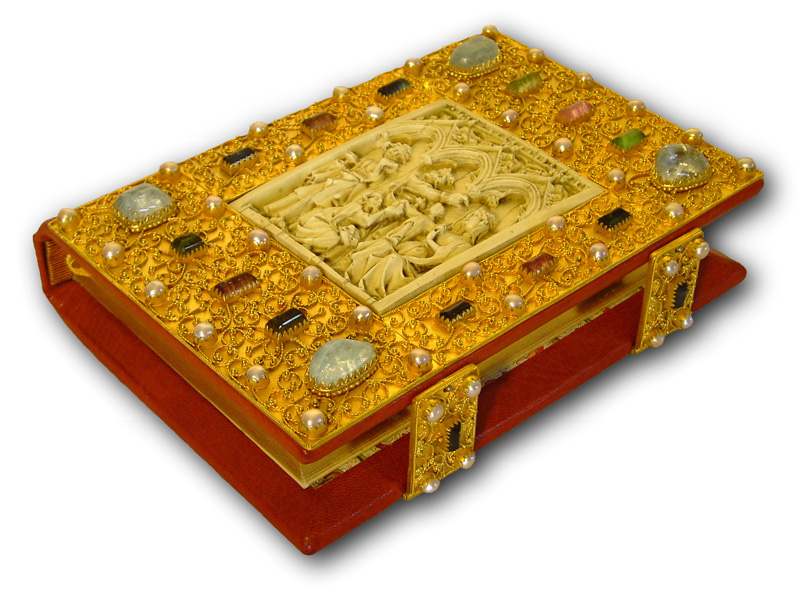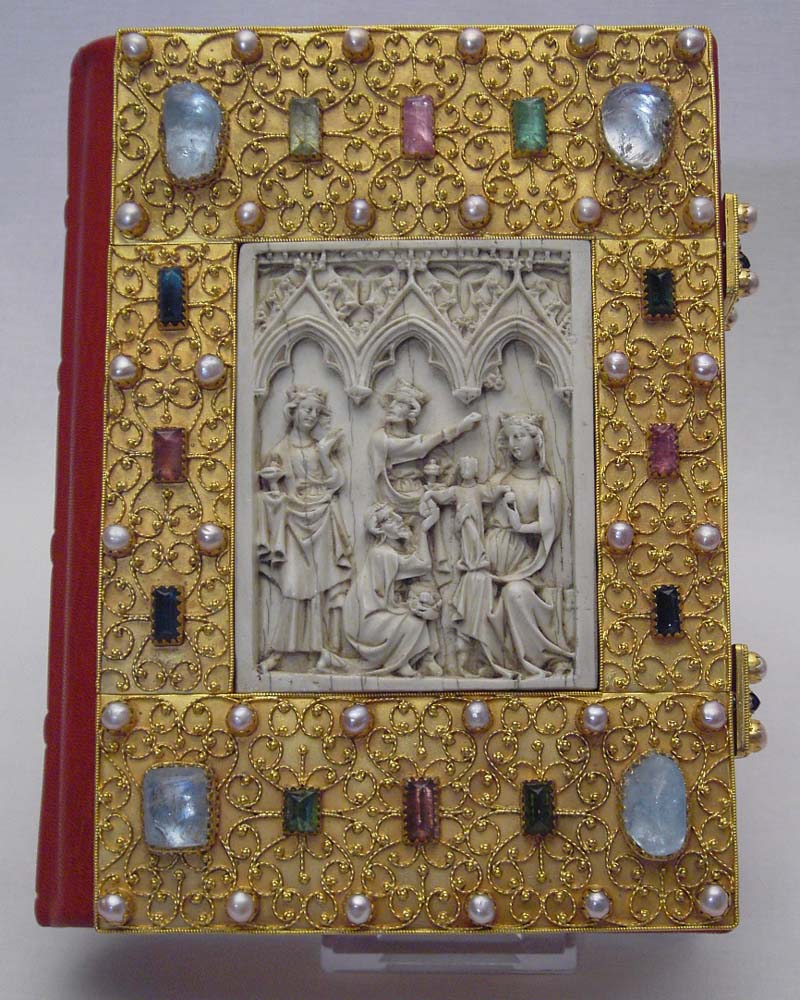In the year 2009 we made a magnificent binding for a very exclusive notebook with elaborate gemstone settings in 24-carat real gold plating, with a medieval Filigree and with a Gothic "ivory relief".
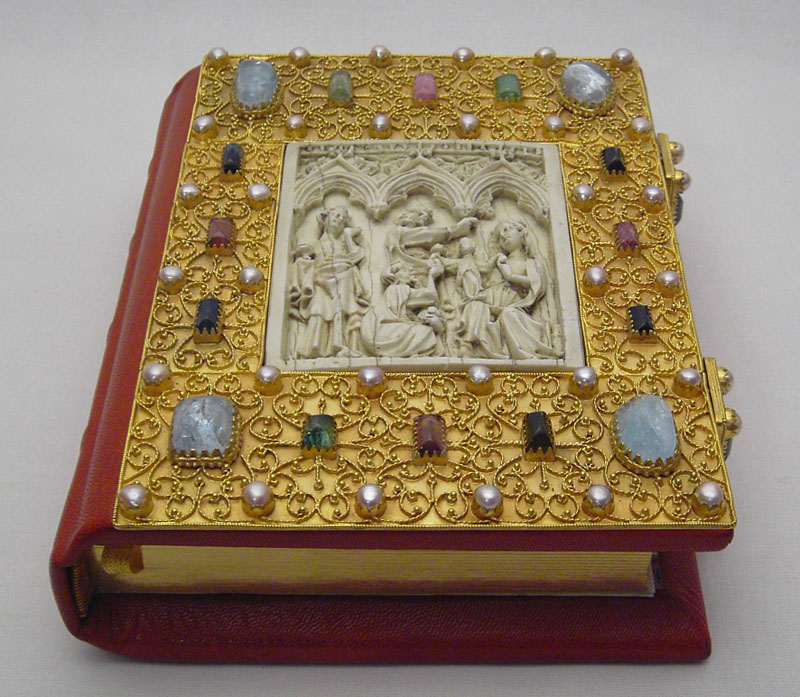
A total of 40 real, champagne-colored cultured pearls, 4 large aquamarines and 14 real tourmalines were found in the so-called “Sugar loaf"-cut (or "sugarloaf cut") used.
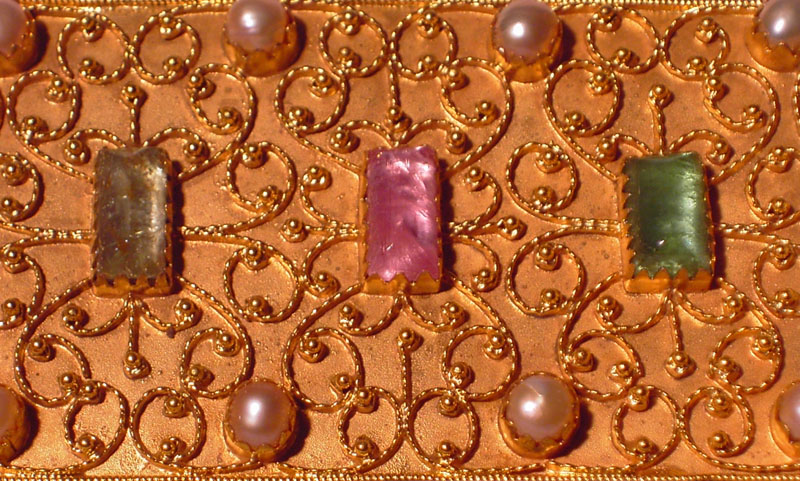
The magnificent binding has 2 additional book clasps, each with a tourmaline and 4 cultured pearls. An all-round gold edge adorns the book pages.

The “ivory panel” in the Gothic style in the center of the front cover depicting the Adoration of the Magi was created using the techniques commonly used today in professional museum copies: from a special synthetic resin with mineral pigments and a final, particularly impressive patination (incl. the typical aging cracks).
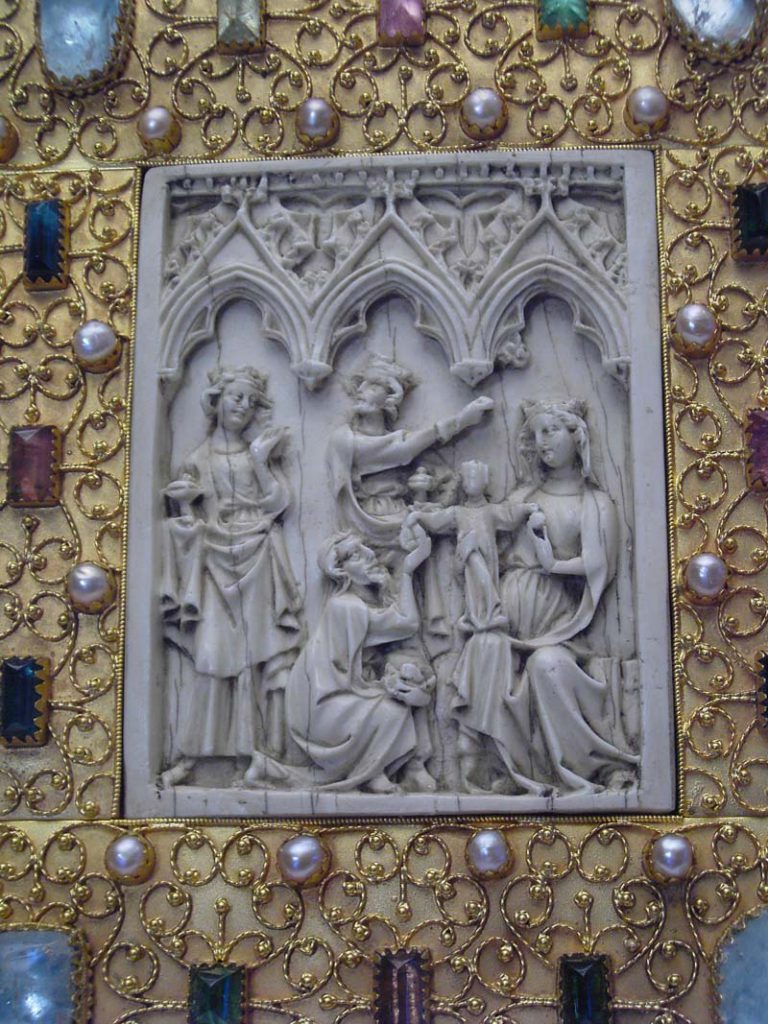
The leather binding is made from a very rare African goatskin (dyed by specialists in England), which is also ordered and processed by the Vatican libraries from the same source. The leather binding was carried out by an experienced master bookbinder.
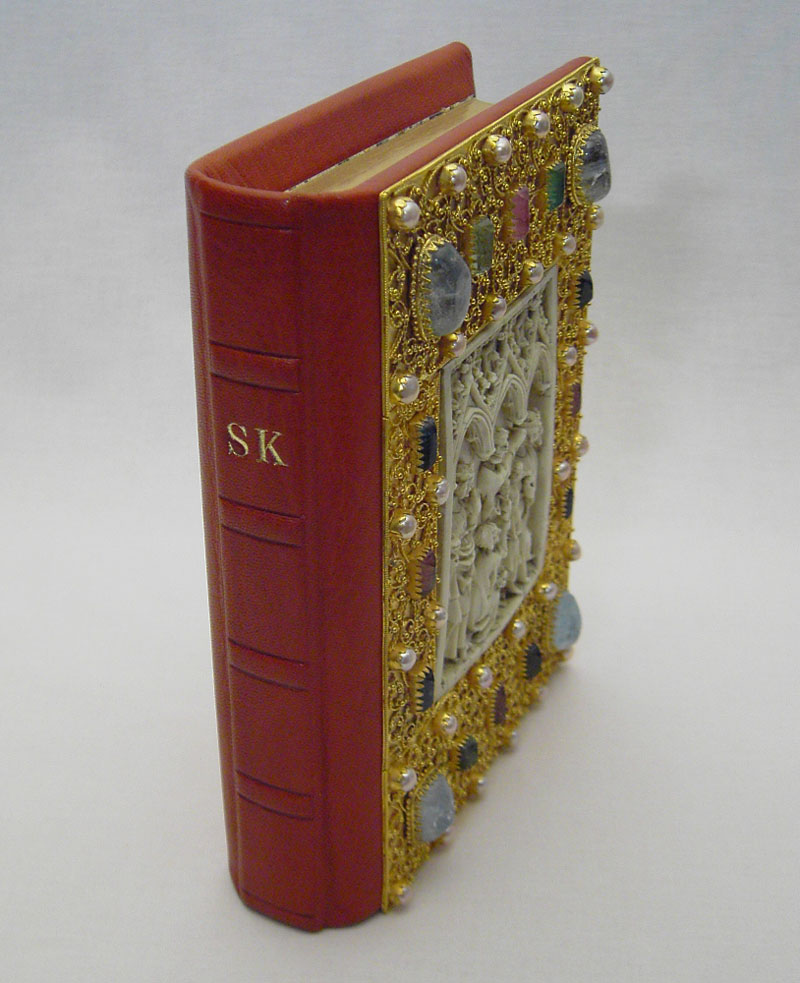
All in all, a very harmonious and feminine-looking gemstone book cover due to the pastel-colored pearls and gemstones, which we were very pleased with.
